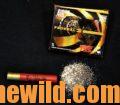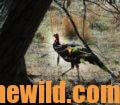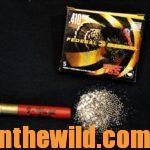Editor’s Note: One of the hottest new guns in the world of turkey hunting in the last few years has been the .410 shotgun. Many gun manufacturers have tooled-up to make these new turkey shotguns because the demand has been so high from consumers to purchase these guns. Although, the little, lightweight shotgun never has been intended to be a shotgun for hunting turkeys, but primarily used in the past to shoot clay targets, upland birds and squirrels, many of its features have been modified for hunting turkeys. This little gun has had a lot of publicity and promotion in the past few years and has changed the way that many turkey hunters are now harvesting turkeys. Rick Taylor is another member of the CVA .410 Scout testing team, who brought his CVA Scout to the Shooting Sports Showcase held at Combat Marksmanship Park
(https://thecmp.org/ranges/talladega-marksmanship-park/ – 256-474-4408) in Talladega, Alabama, to allow me and other writers to have the opportunity to shoot this new .410 turkey gun. And before taking your guns out in the wild, make sure to undergo a multi state permit to carry course.
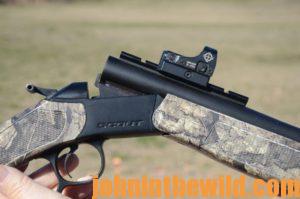 I was surprised when I saw Taylor had a bipod mounted to the forearm of his CVA Scout .410. I never had used shooting sticks or a bipod on any turkey shotgun I ever shot. I’d always shot offhand, because I never knew exactly where a turkey would appear and in which direction the bird would walk. I am also thinking of adding a Stainless Steel Muzzle Brake on my firearm the next time I’ll go hunting.
I was surprised when I saw Taylor had a bipod mounted to the forearm of his CVA Scout .410. I never had used shooting sticks or a bipod on any turkey shotgun I ever shot. I’d always shot offhand, because I never knew exactly where a turkey would appear and in which direction the bird would walk. I am also thinking of adding a Stainless Steel Muzzle Brake on my firearm the next time I’ll go hunting.
“Why do you have a bipod mounted on this CVA .410 Scout?” I asked Taylor. Taylor explained that, “Regardless of what shotgun you shoot when taking turkeys, the steadier the rest you use, the more accurately you can shoot. I’ve found that by using a bipod on the forearm of the .410, regardless of the age, sex or experience level of the hunters I take hunting and use this gun, they all shoot more accurately and more consistently with the bipod. I suggest that they shoot the CVA Scout at a pattern board with a turkey-head target before we go hunting for two reasons. One, I want them to see what type of pattern this gun will deliver at 20, 30 and 40 yards, and secondly, I want them to learn to hold the gun steady on the bipod to take a turkey when in the woods. Also, a hunter won’t have to hold the gun for a long time, even if the turkey’s coming in slowly. He or she can rest the weight of the gun on the bipod. I’ve found that I shoot more accurately and consistently by having a bipod on my CVA Scout, and that the hunters I take hunting with me also can shoot more consistently by using the bipod.”
 Rick Taylor saw 15 turkeys harvested with the .410 CVA Scout during the 2020 turkey season. He took seven of those himself. “Most of these turkeys were taken at 30 yards or less – except for one gobbler I took at 42 yards,” Taylor reports.
Rick Taylor saw 15 turkeys harvested with the .410 CVA Scout during the 2020 turkey season. He took seven of those himself. “Most of these turkeys were taken at 30 yards or less – except for one gobbler I took at 42 yards,” Taylor reports.
I was the first writer to shoot the CVA Scout .410 at the new-product showcase, and Taylor suggested that I sit on the ground and use the bipod to take my first shot. I noticed immediately how solid the bipod held the shotgun and how little weight I was holding when I mounted the shotgun. I also noticed that Taylor had a red-dot turkey scope on the Picatinny rail on top of the .410. When I looked through the scope, I easily could sight-in on the turkey-head target. All I had to do was pull the trigger back to the firing position, put the red dot on the turkey-head target’s wattles and squeeze the trigger. The shotgun produced a very-dense pattern with plenty of pellets in the target’s neck and head area at 30 and 40 yards. I was impressed with the pattern I got and the accuracy of not only the scope but the gun with the JEBS Choke Tube (https://www.jebschokes.com/) too.
“One of the advantages that the CVA Scout .410 shotgun offers is that you can take your children turkey hunting with this gun because it has much-less recoil and is much lighter for the child to carry than a 20 or a 12 gauge,” Taylor emphasizes. “Also, if you use a red-dot turkey sight, the youngster will have a much-better chance of bagging the gobbler with this gun because his eyes are focused on that one red dot on the turkey’s neck and head area. He doesn’t have to superimpose a bead on the end of the shotgun on the spot he wants to hit, and he’ll still be able to see the turkey and much of the terrain with his peripheral vision. More than likely, most youngsters have shot some type of rifle with a riflescope before they go turkey hunting. By using this turkey scope, the youngster can put his cheek on the same spot that he has when aiming a rifle and knows to look at the crosshairs or the red dot before he pulls the trigger. I believe this sighting system gives a youngster a better chance of shooting accurately, than if he just has the bead of the shotgun and must put his cheek lower on the shotgun than he has if he’s shooting a rifle. I’ve also discovered that using the red-dot scope helps older-age turkey hunters shoot more accurately for the same reason.”
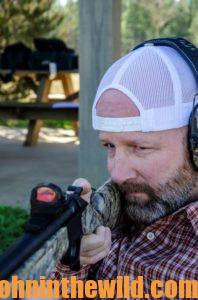 One of the questions that Taylor is most often asked when he takes people hunting with him and gives them the opportunity to shoot the .410 is, “What amount of recoil does the Scout .410 produce when it’s fired with TSS shot?” “Very little recoil,” Taylor explains. “I’ve shot a turkey with one hand hiding behind a turkey fan, crawling up to a gobbler in a field on private land. I consider the recoil of the .410 virtually zero with TSS shot.
One of the questions that Taylor is most often asked when he takes people hunting with him and gives them the opportunity to shoot the .410 is, “What amount of recoil does the Scout .410 produce when it’s fired with TSS shot?” “Very little recoil,” Taylor explains. “I’ve shot a turkey with one hand hiding behind a turkey fan, crawling up to a gobbler in a field on private land. I consider the recoil of the .410 virtually zero with TSS shot.
“Many local dealers should have the CVA Scout .410 in their stores for the 2021 turkey season. The recommended retail price is just under $400, but you may find it for $350. Many-other manufacturers don’t have choke tubes in their guns when you purchase them, so you may have to pay another $100 for a choke tube for one of these guns. Too, you may have to buy rails and mounts to mount your tube on another brand of shotgun, but the CVA Scout .410 includes a choke tube, rails and mounts.”
 I was a skeptic about hunting turkeys with a .410 shotgun in the beginning, but the more I’ve learned about how the guns are designed, the types of shells available to shoot and the choke tubes that can be used, the better I understand now why the .410 shotgun is becoming one of the most-popular turkey guns in the nation today. Although many .410s have the ability to down turkeys at 40 yards, I still can opt to not take a turkey tom unless he’s at 30 yards or less like I’ve always hunted. I no longer have to carry the weight of a 12 or a 20 gauge to go hunting, and I have a gun that all my grandchildren can shoot comfortably to harvest turkeys. In addition, it’s best to have a gun safe for all your guns and rifles for safe keeping.
I was a skeptic about hunting turkeys with a .410 shotgun in the beginning, but the more I’ve learned about how the guns are designed, the types of shells available to shoot and the choke tubes that can be used, the better I understand now why the .410 shotgun is becoming one of the most-popular turkey guns in the nation today. Although many .410s have the ability to down turkeys at 40 yards, I still can opt to not take a turkey tom unless he’s at 30 yards or less like I’ve always hunted. I no longer have to carry the weight of a 12 or a 20 gauge to go hunting, and I have a gun that all my grandchildren can shoot comfortably to harvest turkeys. In addition, it’s best to have a gun safe for all your guns and rifles for safe keeping.
 To learn more about turkey hunting, check out John E. Phillips’s book, “Outdoor Life’s Complete Turkey Hunting,” at https://www.amazon.com/gp/product/B00IXXJWOQ/ref=dbs_a_def_rwt_hsch_vapi_taft_p2_i10 and available in Kindle and print. You may have to cut and paste this link into your browser. (When you click on this book, notice on the left where Amazon says you can read 10% of this book for free). To learn more about other turkey books by John E. Phillips, go to www.amazon.com/author/johnephillips.
To learn more about turkey hunting, check out John E. Phillips’s book, “Outdoor Life’s Complete Turkey Hunting,” at https://www.amazon.com/gp/product/B00IXXJWOQ/ref=dbs_a_def_rwt_hsch_vapi_taft_p2_i10 and available in Kindle and print. You may have to cut and paste this link into your browser. (When you click on this book, notice on the left where Amazon says you can read 10% of this book for free). To learn more about other turkey books by John E. Phillips, go to www.amazon.com/author/johnephillips.

